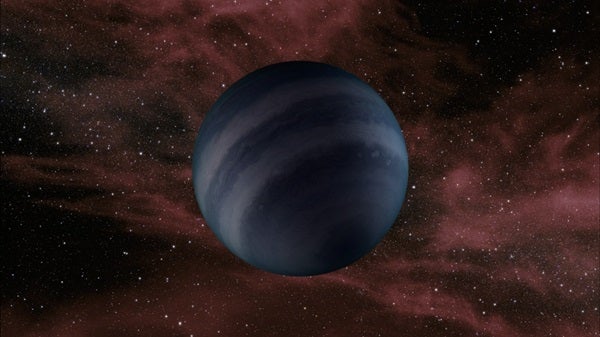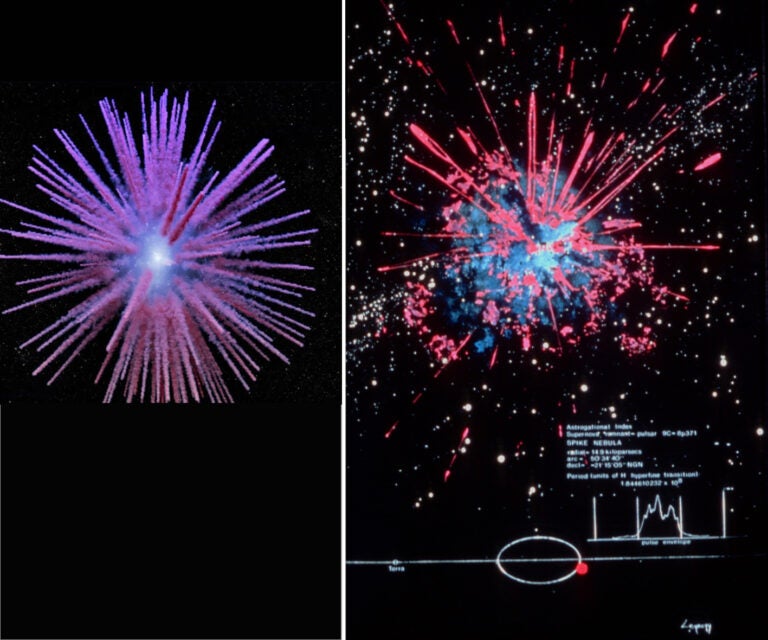Q: Astronomers recently discovered brown dwarfs of only a few hundred degrees fahrenheit, which seems about the same temperature as some planets. So what is the difference between a brown dwarf and a planet?
A:This is an excellent question, and it’s one that even astronomers have a hard time agreeing on. There are three criteria that we consider when trying to distinguish among stars, giant planets, and brown dwarfs: how they formed, how massive they are, and what they look like.
All of the planets we study today — including the ones in our solar system — orbit a star. A planetary system’s multiple worlds tend to orbit in the same direction and in nearly the same plane. These patterns indicate that planets form out of the circumstellar disks encircling young stars. (While we have observed such structures, scientists in the 18th century first conceived the idea.) On the other hand, we usually find brown dwarfs as isolated objects or in pairs, suggesting that they form like stars. This “formation” definition, however, depends on knowing how an object was made, which is not always clear. It also assumes we fully understand planet and star formation, but recent discoveries with the Spitzer, Kepler, and Herschel space telescopes indicate that we have much to learn about these processes.
Mass is another way to distinguish planets from brown dwarfs. We already separate brown dwarfs from stars at a mass of about 75 times that of Jupiter — below that, an object’s core doesn’t get hot enough for hydrogen to fuse (the key property of a star). An equivalent mass boundary between planets and brown dwarfs is the deuterium fusion limit, which occurs at about 14 times Jupiter’s mass. Deuterium is an isotope of hydrogen that contains a proton and a neutron in its nucleus (a hydrogen nucleus contains just a proton). Deuterium is the easiest atom to fuse, so objects that cannot fuse deuterium cannot fuse anything, which sets a threshold for distinguishing the two classes of objects. Mass is also useful because we can directly measure it through, for example, the orbital motion of bodies in a binary system or microlensing observations (which utilize a trick of gravity).
Unfortunately, the mass definition occasionally conflicts with the formation definition. We’ve detected “free-floating non-fusors” in the Sigma (σ) Orionis cluster and the deuterium-burning “planet” CoRoT-3b. Plus, not all planets and brown dwarfs have masses that are easy to measure.
Distinguishing a planet from a brown dwarf based on its appearance is probably the most challenging approach. As you point out, we now know of brown dwarfs that have low atmospheric temperatures like giant planets and have the same atmospheric compositions (mostly hydrogen and helium), so the spectra we measure from brown dwarfs and planets are similar. We have increasing evidence that clouds in the atmospheres of brown dwarfs and giant planets might be different, but such research remains work in progress.
In practice, we use a combination of these characterizations to determine whether an object is a planet or a brown dwarf, and the International Astronomical Union has proposed a definition that combines the formation and mass criteria described above. But we still don’t always agree. Last year, I conducted a survey of astronomers, students, and the public, asking them to classify 10 objects as planets, brown dwarfs, or something else. The group did not classify any of the objects unanimously as a planet or brown dwarf, and in some cases the vote was evenly split. Remarkably, many respondents chose the “something else” category for some of these objects.
Nature rarely conforms to our classification schemes. Re-evaluating them in light of new discoveries helps us deepen our understanding of the universe.
University of California, San Diego










